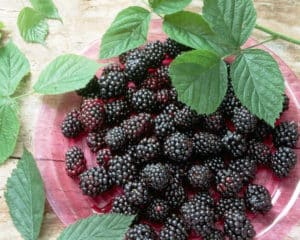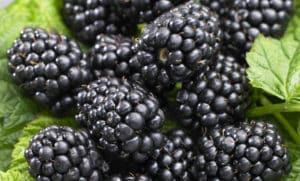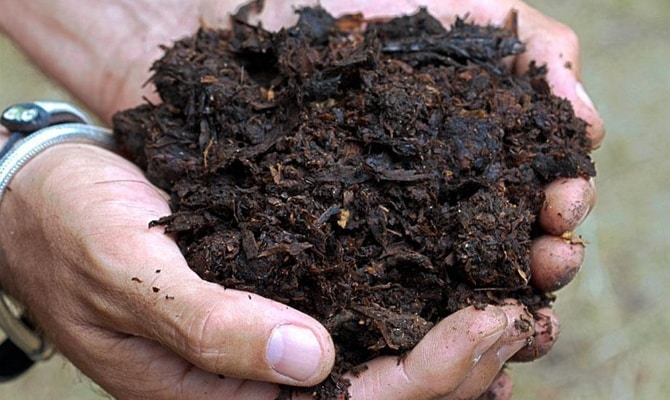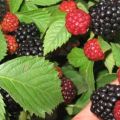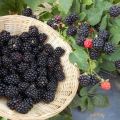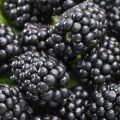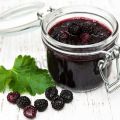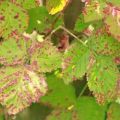Description and characteristics of blackberry varieties Thornless Evergreen, reproduction, planting and care
Thornless Evergreen Blackberry is grown commercially in its homeland in America. The variety is productive, disease resistant. For an amateur garden, this type of blackberry is ideal. In the south, the bushes are decorative all year round, in temperate latitudes they adorn the garden plot from spring to late autumn.
Thornless Evergreen breeding history
Immigrants from Europe brought the first specimens of the blackberry (Rubus laciniatus Wild) to America. Old European varieties have mutated. The thornless clone was introduced into the culture by F. Steffis. The work was carried out at the Oregon State Institute. In 1926, the new variety was named Thornless Evergreen.
Despite its venerable age, the variety is in demand among farmers in many European countries (Germany, Serbia, Poland). In his home state of Oregon, large areas are set aside for it. It competes with large-fruited erect forms of blackberries.
Pros and cons of the variety
The disadvantages include late ripening - from mid-August to mid-September. Not everyone is satisfied with its low yield in the first years. Full fruiting occurs at the age of 3-5 years.
The advantages of Thornless Evergreen include:
- not aggressiveness of the variety, the bushes do not creep, since there is no root growth;
- stable yield;
- frost resistance;
- transportability;
- extended fruiting;
- decorativeness;
- versatility of use.
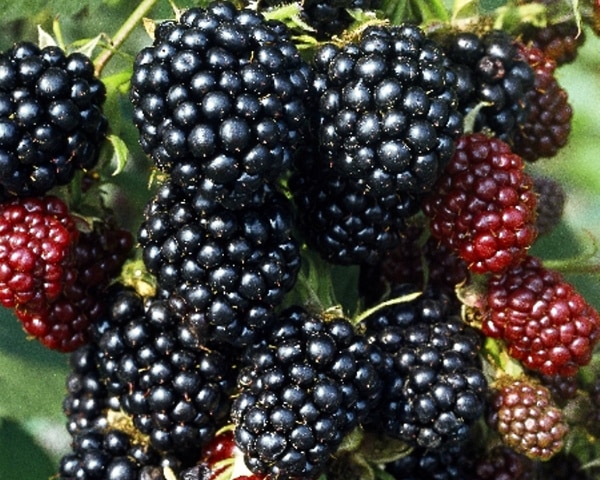
Varieties
Blackberry Thornless Evergreen is included in the Thornless variety series, which unites about 100 varieties of crops, the varieties most popular with farmers and hobbyists:
- T. Oregon;
- T. Merton;
- T. Hoole;
- T. Hull;
- T. Austin;
- T. Chester;
- T. Logan;
- T. Loganberry.
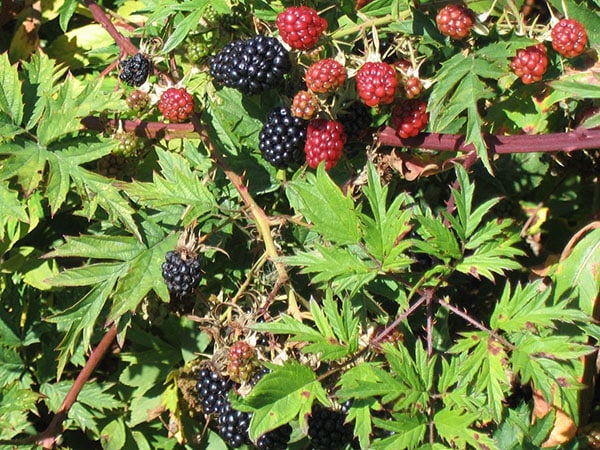
External characteristics of berry culture
According to the Russian classification, the Thornless Evergreen variety belongs to the group of creeping varieties of blackberries, they are called dews. The bushes are compact, formed by 3-5-meter shoots 1 and 2 years old. During the summer, an adult plant can release up to 10 or more replacement shoots. Fruit buds are laid on an annual shoot during the growing season. The crop is formed on two-year-old shoots.
A young shoot at the beginning of development is green, by the end of the first season it acquires a reddish tint.The root system is powerful, it penetrates up to 2 meters deep. Root shoots are not formed.
The leaves are green all year round. They are beautiful, carved, with a leathery surface. Inflorescences are large, racemose, and consist of 25-70 white or white-pink flowers. During flowering, Thornless Evergreen bushes are very decorative.

The berries are not large, one-dimensional, the average weight of one is from 3 to 5 g. Easily removed from the stalk. During fruiting, multi-berry clusters hide leaves. The color of fully ripe berries is black.
Short description
Thornless Evergreen late. Flowering lasts from June to July. Harvesting from mid-August to mid-late September.
In what areas is it recommended to plant
The Thornless Evergreen variety is not included in the State Register, so there are no exact recommendations for growing regions. In a covering culture, this variety of blackberries can be grown in the middle lane. The variety is in the collections of amateur gardeners in Bashkiria, Mordovia, Orenburg, Moscow, Volgograd regions.
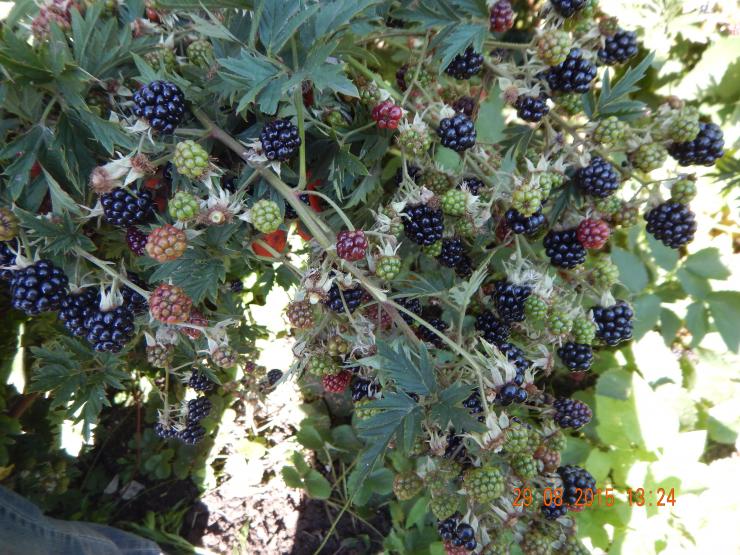
Frost and drought resistant
The variety can withstand frosts in the range from -20 to -29 ° C. In regions where the snow cover is stable, it lays down early, the culture winters well under a small shelter. The blackberry root system is powerful, so it can endure short-term drought. With drip irrigation, the variety is grown in the arid regions of Texas.
For the Russian central strip, 1 watering per week (20 l) is sufficient, provided that the trunk circle is mulched.
Susceptibility to disease and insects
To maintain the health of the bush, one early spring treatment with a copper-containing preparation is enough. The variety has a stable immunity. Preventive measures are reduced to sanitary pruning, maintaining the cleanliness of the trunk circle.
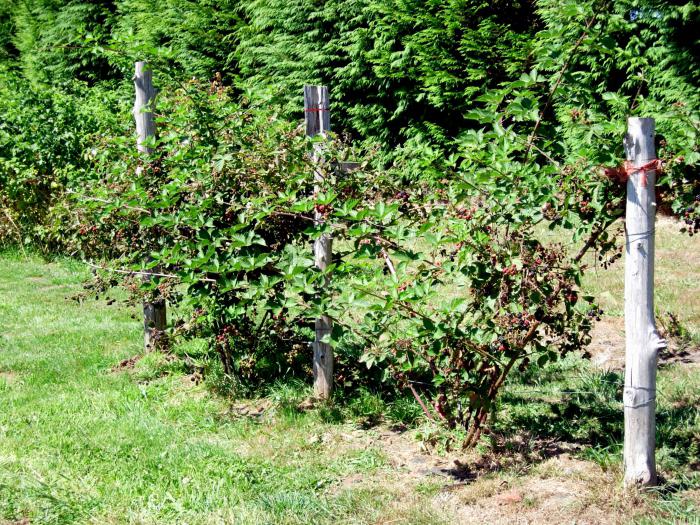
Reproduction methods
A beginner gardener should purchase a seedling with a closed root system. This is the most reliable option. blackberry breeding... If there is an adult Thornless Evergreen bush in the garden, then the variety can be propagated in 2 ways:
- green cuttings;
- apical layers.
Yield
The productivity of the bush depends on the agricultural background. During the first 3 years, few fruits are formed. From 4-5 years old, 10 kg or more are collected from the bush. The yield of adult blackberries is stable.
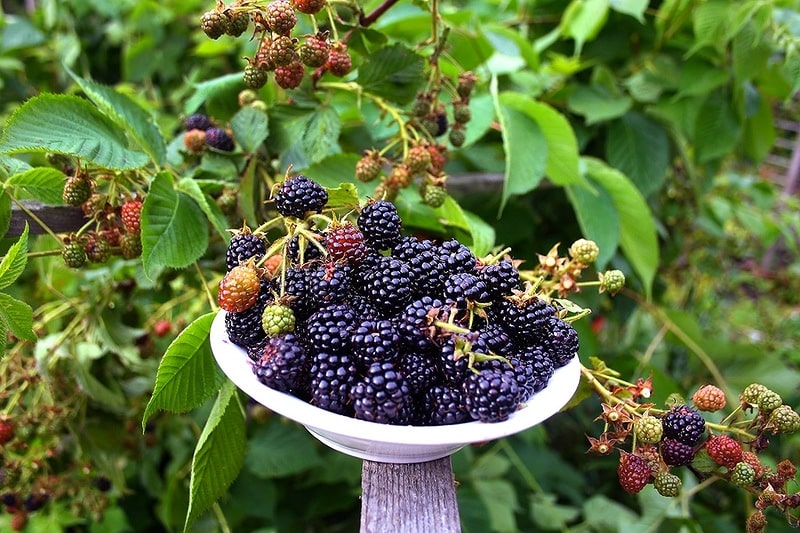
Taste and use of fruits
At the stage of technical ripeness, there is a pronounced sourness in the taste of berries. When ripe, it leaves. The pulp of a ripe berry is juicy and aromatic. The taste is pleasant, refreshing. A universal variety, berries can be stored in the refrigerator for several days. They do not crease during transportation. They are used in preparations, frozen, and eaten fresh.
Features of planting and care
When buying a 1-2-year-old healthy seedling in the nursery, there are no problems with planting and survival. The main requirement for planting material is a healthy root system and no damage.

Preparation of planting material
A seedling in a container is planted in a permanent place without additional preparation. Blackberries with an open root system must meet the following requirements:
- the height of the aboveground part is not less than 40 cm;
- the central shoot is elastic;
- root length at least 15 cm;
- skeletal roots at least 3 pieces.
Choosing the best place
Sunny places with the wind are suitable. When choosing a site, you need to assess the proximity of groundwater so that the powerful roots do not rot over time. Low-lying places are not suitable.
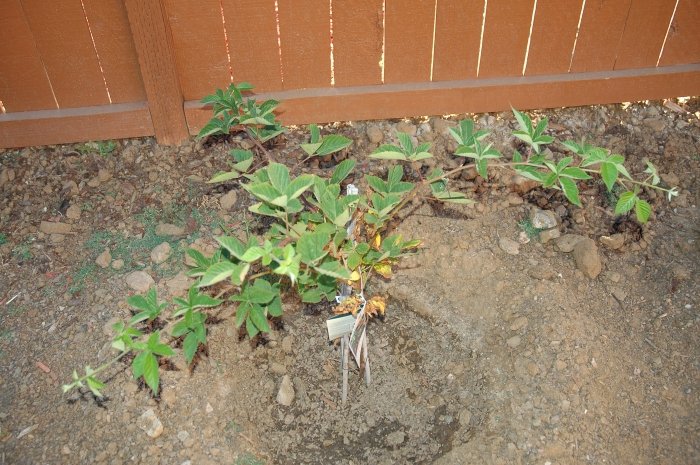
A blackberry bush has been growing in one place for many years, so the soil needs to be fertilized with humus, mineral fertilizers (superphosphate, potassium nitrate) of prolonged action, and ash.
Planting technological process
The planting sequence is standard. Most of the time is spent preparing the landing pit.Its size is 40 x 40 x 40 cm. The interval between the bushes is at least 2 m. The same distance is maintained to other plants in the garden (shrubs, trees).
Requirements that are met during planting:
- the roots are straightened;
- the neck is not buried;
- the hole is well watered and mulched.

Irrigation and loosening of the soil
The first 2-3 years, watering during the growth of the vegetative mass is abundant. An adult bush has a powerful root system, so watering is carried out only when the berries are being poured. It is not recommended to loosen the soil 1 m in diameter from the center of the bush. Growth can go from the damaged rhizome, it has thorns, so it should not be used for breeding the variety.
Fertilizing bushes
During the season, it is enough to feed the blackberries 2 times.
| Period | Fertilizer type |
| Early spring | Organic |
| Summer | Ash, superphosphate, potassium nitrate |
Installation and tie-up to supports
Shoots are tied to a trellis. It is convenient to use two-way designs. The replacement shoots are directed to one side, the fruiting branches are tied to the other. Other garden designs are allowed, they decorate the garden, but getting ready for winter is more difficult. It takes more time to remove and lay the shoots.
Berry bush formation
In the fall, the young, damaged and weak shoots are cut out. In the spring, they are engaged in the formation of a bush:
- shorten last year's shoots;
- cut branches with thorns.
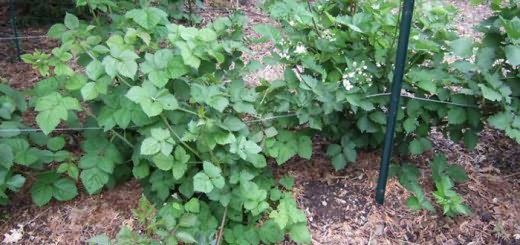
Harvesting
Berries ripen unevenly. Collect them once every 2 weeks. Fruiting is extended. The first fruits ripen in mid-August, the last at the end of September.
Preparing for the winter period
After autumn pruning, young shoots remain on the bushes. They are removed from the support, laid on the ground (in a ditch), pinned. They are sprinkled so that they do not suffer from frost in winter, they are used:
- peat;
- straw;
- sawdust;
- non-woven covering material.
An interesting and productive variety of thornless blackberry deserves the attention of Russian gardeners.
